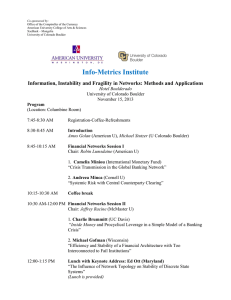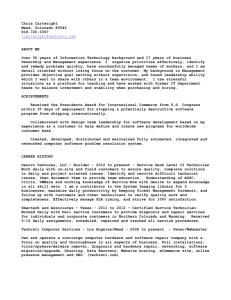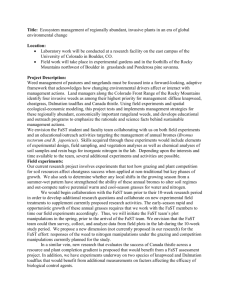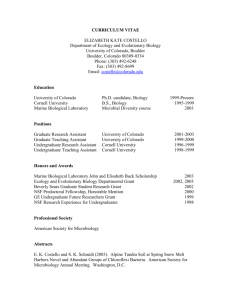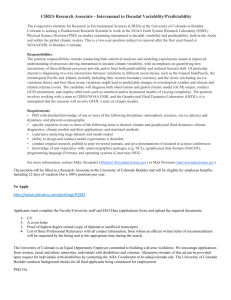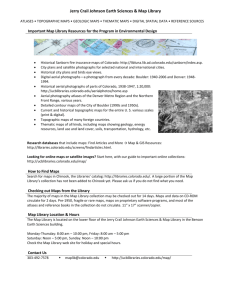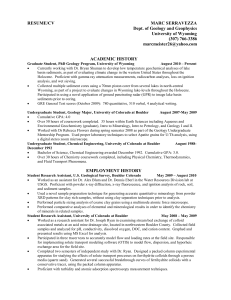wrcr21185-sup-0001-suppinfo01
advertisement
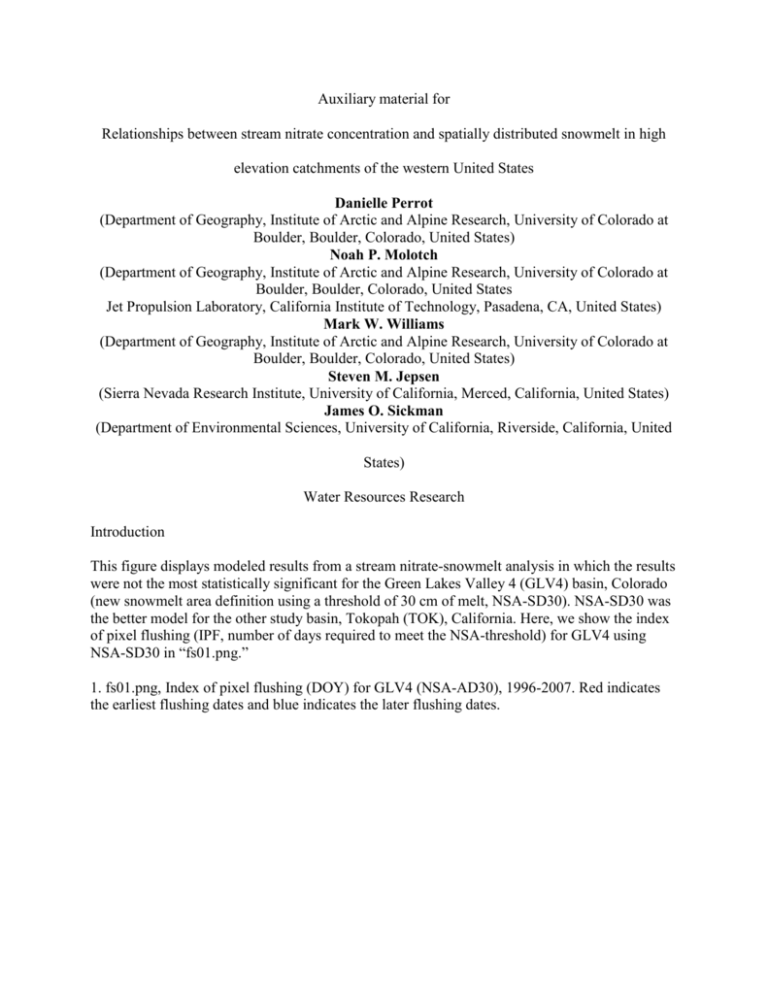
Auxiliary material for Relationships between stream nitrate concentration and spatially distributed snowmelt in high elevation catchments of the western United States Danielle Perrot (Department of Geography, Institute of Arctic and Alpine Research, University of Colorado at Boulder, Boulder, Colorado, United States) Noah P. Molotch (Department of Geography, Institute of Arctic and Alpine Research, University of Colorado at Boulder, Boulder, Colorado, United States Jet Propulsion Laboratory, California Institute of Technology, Pasadena, CA, United States) Mark W. Williams (Department of Geography, Institute of Arctic and Alpine Research, University of Colorado at Boulder, Boulder, Colorado, United States) Steven M. Jepsen (Sierra Nevada Research Institute, University of California, Merced, California, United States) James O. Sickman (Department of Environmental Sciences, University of California, Riverside, California, United States) Water Resources Research Introduction This figure displays modeled results from a stream nitrate-snowmelt analysis in which the results were not the most statistically significant for the Green Lakes Valley 4 (GLV4) basin, Colorado (new snowmelt area definition using a threshold of 30 cm of melt, NSA-SD30). NSA-SD30 was the better model for the other study basin, Tokopah (TOK), California. Here, we show the index of pixel flushing (IPF, number of days required to meet the NSA-threshold) for GLV4 using NSA-SD30 in “fs01.png.” 1. fs01.png, Index of pixel flushing (DOY) for GLV4 (NSA-AD30), 1996-2007. Red indicates the earliest flushing dates and blue indicates the later flushing dates.

